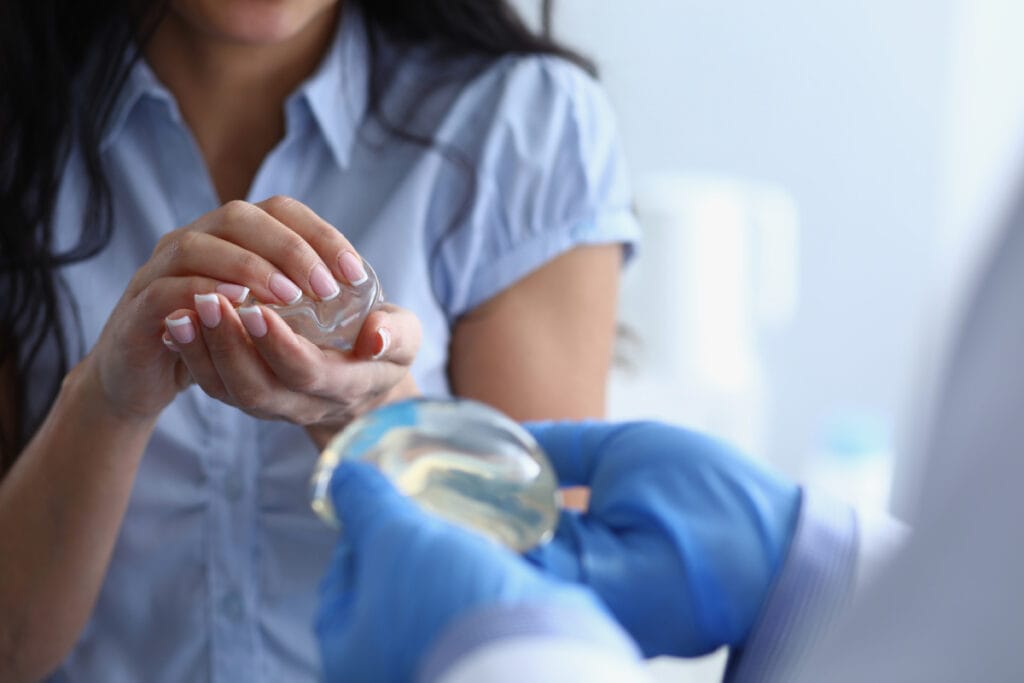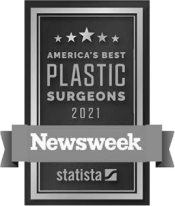Small Breasts (Micromastia)
Many women find having a small breast size concerning: they often report feeling self-conscious, wish their clothes would fit better, and avoid certain styles. Small breasts, or micromastia, do not necessarily indicate any health concern, but if you find that your confidence is affected by your breast size, know that it is a legitimate concern and you have options: breast augmentation ranks consistently as a top 5 plastic surgery in the U.S.
Dr. Brannon Claytor, a nationally-renowned board-certified plastic surgeon, has been helping women regain their confidence for many years now, using breast augmentation procedures that are designed to safely and effectively enhance small breasts. Below, we explore the causes and concerns related to small breasts, and discuss the plastic surgery options available to you.
Causes of small breasts
Your breast size is typically determined by a combination of genetics, hormonal influences, and body fat, but underdeveloped breasts may sometimes be caused by hormone imbalances during breast development, leading to what’s known as juvenile or virginal hypomastia (small breast size is medically termed “micromastia” or “hypomastia”). Other times, breast size can simply be a matter of genetics.
Dr. R. Brannon Claytor
Dr. Claytor is board certified by the American Board of Plastic Surgery and holds over 20 years of experience as a cosmetic plastic surgeon. An innovator and teacher in the field of plastic surgery, he uses advanced techniques like the drain-free tummy tuck and deep plane facelift to streamline recovery and provide natural-looking, durable results.




Related concerns to small breasts
While small breasts are not a medical condition and do not cause physical health issues, they can most certainly have psychological impacts. Many women with smaller breasts can feel self-conscious in swimsuits or certain clothes, affecting their self-esteem and body image. On top of that, it can also limit clothing options and bra fitting. Unilateral micromastia, where one breast is significantly smaller than the other, can further result in breast asymmetry—another common concern among women.
For patients who have saggy breasts or a “deflated” appearance (i.e. after breastfeeding), this is called “breast ptosis” and can only be corrected with a breast lift (mastopexy).

Plastic surgery for small breast size
When it comes to addressing small breast size, cosmetic procedures like breast augmentation (augmentation mammoplasty) can significantly improve the size, shape, and symmetry of the breasts, giving them a fuller and more balanced appearance.
Breast augmentation with implants
Breast augmentation with implants remains one of the most popular cosmetic procedures in the United States and around the world. The procedure involves the insertion of a saline or silicone gel-filled breast implant to increase the volume of and create a rounder shape in the breasts, and it carries a very high patient satisfaction rate.
Saline breast implants
Saline breast implants are made of a silicone outer shell that is filled with sterile saline. If a saline implant leaks, the body safely absorbs the saline, and the breast visibly deflates. These implants can be adjusted for volume during the breast implant surgery, which allows plastic surgeons more flexibility in achieving symmetry.
Silicone breast implants
Silicone gel-filled breast implants, on the other hand, contain a silicone gel that is lightweight and feels more like natural breast tissue. Many patients choose this kind of breast-implant for its natural look and feel. However, unlike saline implants, there is a risk of silent rupture, in which the implant breaks but is not immediately noticeable. To check silicone-filled implants’ integrity at intervals over time, the FDA recommends MRI or ultrasound screenings.

Fat transfer to the breast
Fat transfer breast augmentation, or autologous fat grafting, is a more natural alternative to traditional breast implants. This procedure involves extracting fat from one part of the body via liposuction, purifying it, and then injecting it into the breasts to increase their size. This injection method can provide natural-looking enhancement without the use of implants, but it’s important to understand the limits of this procedure: the amount of volume that can be added is limited, it will likely achieve subtle results, and fat transfer alone can not significantly affect the breasts’ shape.
Combined breast implants with fat transfer
In some cases, surgeons may combine breast implants with fat transfer when needed to achieve your goals. This combination can offer the volume enhancement of implants and the natural-looking contouring provided by fat transfer, helping to create natural transitions or conceal implant rippling, if needed.
Before & After Gallery
Dr. Brannon Claytor uses advanced techniques to provide natural-looking outcomes. See the results for yourself in our patient gallery.
“I had a breast augmentation by Dr. Claytor a little more than 6 months ago and I could not be happier with the results! From my first appointment to my most recent appointment, Dr. Claytor and the rest of the staff have been nothing by incredibly nice and thorough in everything they do! Someone has always been available to answer any questions I have and the whole process went very smooth! I have recommended Dr. Claytor and I will continue to recommend him to family and friends. I got the exact results I wanted!!”
Choosing the right plastic surgeon is a vital step in your journey towards achieving the breasts you desire. Consider these key criteria when making your decision:
- Board-certified plastic surgeon
- Commitment to patient education
- Active participation in research and the plastic surgery community
- Positive patient reviews
- Extensive experience with breast augmentation procedures
Dr. Brannon Claytor is a board-certified plastic surgeon who has helped numerous women regain confidence with successful breast enhancement procedures. His empathetic approach and commitment to safety make him a trusted choice for Philadelphia plastic surgery.
Why choose Dr. Claytor for your plastic surgeon?
Double Board-Certified for a high level of safety and precision
Chief of Plastic Surgery at Main Line Health, a top health system
Board Member of The Aesthetic Society, shaping the future of aesthetics
8x Philadelphia Magazine Top Doctor for exceptional patient care
Recognized as one of America’s Best Plastic Surgeons by Newsweek
Drain-free recovery expert for faster, more comfortable healing
Deep plane facelift innovator and global educator
Active researcher in surgical and non-surgical aesthetic advancements
Highly regarded for his surgical expertise and outcomes, as well as his dedicated follow-up care





Schedule a consultation with Dr. Claytor today by calling (610) 527-4833 or contacting us online.

Medically reviewed by Dr. R. Brannon Claytor — Updated on Oct 26, 2024


